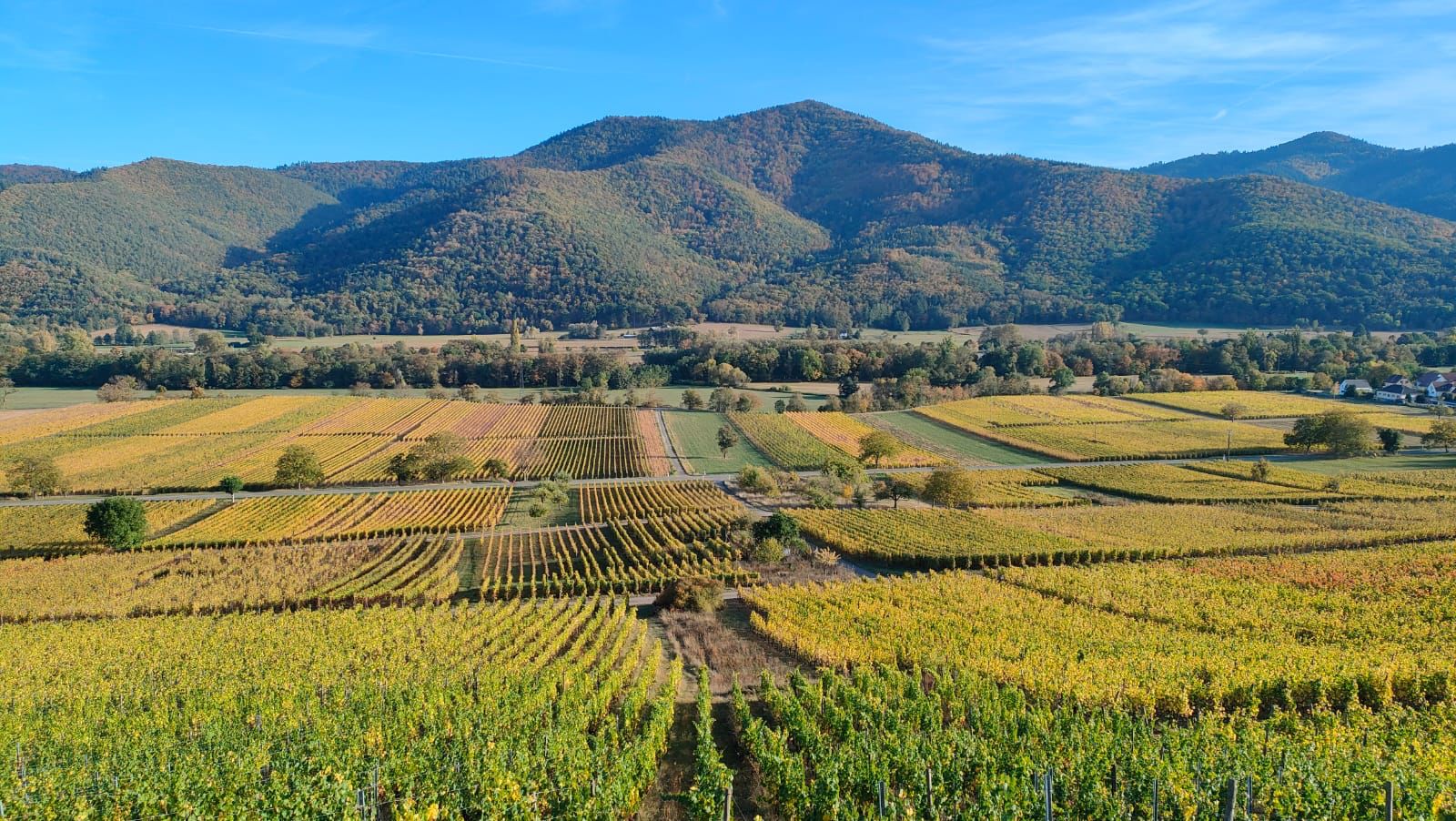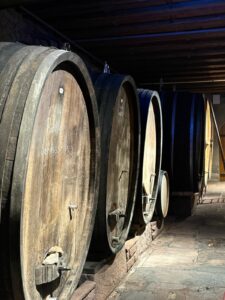Pinot Noir and the new challenge for the future

Viticulture in Alsace has ancient origins, possibly dating back to the Celts, but it was with the Roman conquest in 58 BC that vine cultivation truly took root. Already in Roman times, Alsatian wines enjoyed a solid reputation—so much so that Emperor Domitian was compelled to limit their production to protect Italian vineyards. During the Middle Ages, monasteries played a crucial role in preserving and refining viticultural techniques. By the 9th century, Alsatian wines were being exported to destinations such as Holland, Switzerland, and Germany. The Alsatian vineyard reached its peak in the 16th century, covering twice the area it does today. However, wars, vine diseases, and economic crises caused a gradual decline. Today, Alsace comprises approximately 15,500 to 15,900 hectares of vineyards, with production predominantly focused on white wines (about 90%). Key varieties include Riesling, Gewürztraminer, Pinot Gris, and Muscat. However, Pinot Noir, the region’s only significant red grape, is gaining increasing prominence. It now represents roughly 11% of the vineyard area (around 1,700 hectares).Grown mainly along the lower slopes of the Vosges Mountains, on granite, volcanic, and schist soils, Alsatian Pinot Noir expresses itself with unique freshness, elegance, and drinkability—offering a distinctive alternative to the more structured reds of Burgundy or the Rhône. The region’s mild, semi-continental climate, protected by the Vosges, allows for slow ripening and preserves natural acidity. In the past two decades, Alsace Pinot Noir has undergone a remarkable qualitative leap. Advances in winemaking and aging techniques, including the use of whole-cluster fermentations, larger oak barrels, and minimal intervention, have produced wines that are more refined, precise, and true to their terroir. These wines do not attempt to mimic Burgundy but instead present an authentic Alsatian identity. A turning point for the region came with the official recognition of Pinot Noir Grand Crus—Kirchberg de Barr, Hengst, and, starting from 2024, Vorbourg—signaling formal acceptance of red wine as part of Alsace’s top-tier production. Proposals to introduce a Premier Cru classification further reflect the region’s ongoing dynamism and qualitative evolution. At the same time, Alsace faces structural challenges: vineyard area is expanding slowly, the number of wineries is declining, and exports remain under pressure in highly competitive markets. Yet positive signs are emerging, particularly from countries such as Italy, where both Crémant d’Alsace and high-end still wines are gaining traction. The gastronomic versatility of Pinot Noir, coupled with growing consumer demand for fresh, elegant reds, is helping to position Alsace as an increasingly attractive source of fine wine. The renewed success of Alsace Pinot Noir also reflects the broader context of soaring prices and limited availability of Burgundy Pinot Noir. Alsatian reds now stand as a credible, authentic, and accessible alternative, capable of offering elegance, tension, and aging potential without compromising their own identity. Visionary producers have led this renaissance, crafting Pinot Noirs that are unmistakably Alsatian—not Burgundian. Today, Alsace’s wine scene is vibrant, diverse, and forward-looking. Alongside its historic reputation for aromatic whites, reds—led by Pinot Noir—are finding renewed centrality, showcasing the region’s extraordinary richness and potential. For wine lovers seeking authentic, complex, yet approachable wines, Alsace represents one of the most exciting frontiers in the European wine landscape.
Among the many estates we visited, two stood out for encapsulating the full potential of Alsace Pinot Noir: Domaine Weinbach and Domaine Schoenheitz.

Domaine Weinbach: icon of elegance and history
Domaine Weinbach is one of the most iconic and respected names in Alsatian viticulture. Located in Kaysersberg, at the foot of the hill crowned by the medieval castle that gives the estate its name, it covers around 28 hectares and boasts a centuries-old tradition, today passionately carried forward by the Faller family. einbach’s winemaking philosophy is rooted in biodynamic agriculture, with deep respect for the terroir and meticulous vinification aimed at highlighting the identity of each individual parcel. The estate focuses primarily on two major soil types: the granite slopes of “La Colline du Château” and the marl-limestone soils of “Altenbourg” and the Grand Cru Furstentum. Each of these terroirs offers a distinct expression of Pinot Noir, with a pure, delicate, and vibrant voice that remains faithful to the climatic nuances of each vintage. The 2021 vintage was cool, marked by late ripening and the constant threat of mildew, but Weinbach managed to safeguard grape quality, producing reds of extraordinary elegance and tension. By contrast, 2022 benefited from a warmer and drier climate, resulting in wines with greater richness and roundness while maintaining the estate’s hallmark freshness.
Domaine Schoenheitz, precision and biodiversity
Domaine Schoenheitz is located in Wihr-au-Val, on the southern slopes of the Vosges Mountains. The estate covers about 17 hectares of vineyards situated between 300 and 500 meters above sea level. The Schoenheitz family, originally from Austria and settled in Alsace after the Thirty Years’ War (1648), resumed winemaking in the 1980s under Dominique and Henri Schoenheitz, with Adrien Schoenheitz joining in 2014. Since then, the domaine has made sustainability and terroir stewardship its defining mission, earning HVE (High Environmental Value) certification. The estate is built around four main crus: Herrenreben, Holder, Linsenberg, and Val Saint Grégoire, all characterized by granitic soils with varying amounts of clay and sandy skeleton. The steep slopes make mechanization impossible, so all vineyard work is done manually, supported by a natural ecological corridor that preserves biodiversity and ensures minimal environmental impact. In the cellar, Pinot Noir is vinified according to a strict protocol: gentle destemming, 15-day maceration with delicate pump-overs, controlled infusion, and aging in barrique for approximately 12 months. The goal is to extract tannic finesse, freshness, and elegance, avoiding the rustic aggression sometimes associated with lesser Pinot Noir. The domaine offers a range of wines, from a “Tradition” Pinot Noir to more site-specific bottlings such as Val Saint Grégoire, Herrenreben, and Linsenberg, with wines that evolve beautifully over time and faithfully reflect their terroir.
